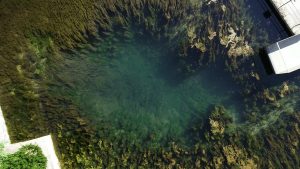Hidden hunter in the sand
A true specialist lurks for prey in open sand areas, easy to recognise by the approximately 1-5 cm large funnels. These come from the larvae of the ant maiden, the so-called ant lions. By spiraling backwards and hurling the sand away, they dig their funnels into the loose sand. As soon as a small animal (e.g. an ant) runs through the funnel, the sand starts moving on the steep walls of the funnel. The ant lion lurking in the centre of the funnel notices this and hurls sand upwards, causing the prey to slide further down. If it comes within reach of the ant lion, it grabs it with its powerful jaws, injects a digestive enzyme and sucks the prey out. It is quite astonishing that ant lions can lurk for prey for several months in an active state of readiness to hunt.
The ant lion funnels can sometimes be found on open sand places, but more often on roadsides or other places where the vegetation has been torn and a small, protected sand spot is created.
After the metamorphosis, the filigree ant maiden, which resembles a dragonfly in shape, slips out of the cocoon hidden in the ground. The ant maidens are also predatory and prey on other invertebrates.







